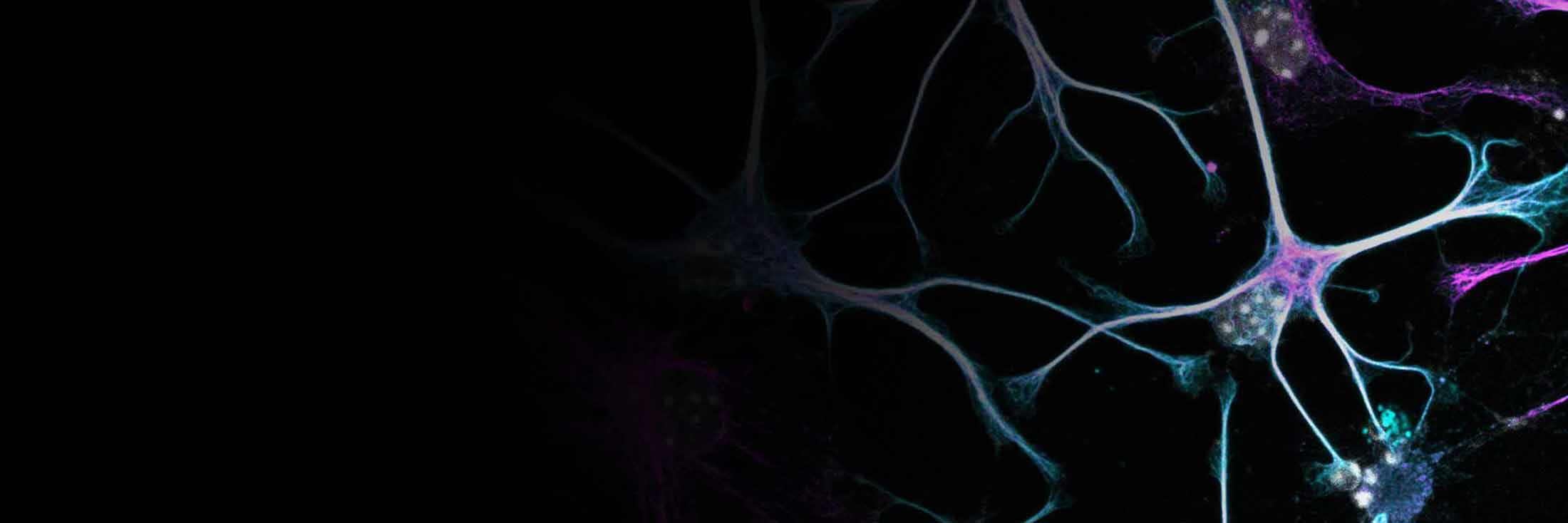
Books & Review Articles
Fluorescence Spectroscopy and Microscopy in Biology
Determination of Biomolecular Oligomerization in the Live Cell Plasma Membrane via Single-Molecule Brightness and Co-localization Analysis
Clara Bodner and Mario Brameshuber
Springer, Series on Fluorescence – Methods and Applications
August 2022
Abstract:
Oligomerization of biomolecules on the plasma membrane drives vital cellular functions. Despite the importance of detecting and characterizing these molecular interactions, there is an apparent lack of proper techniques capable of unraveling the exact composition of multimolecular complexes directly on the (live) cell membrane, particularly when present at high surface densities. In this chapter, commonly applied single-molecule fluorescence microscopy approaches are reviewed in terms of their suitability for detecting molecular aggregates down to the smallest biologically relevant unit: a molecular dimer. Amongst these techniques, Thinning Out Clusters while Conserving Stoichiometry of Labeling (TOCCSL) – a modality based on single-molecule brightness and co-localization analysis – is discussed in detail. The chapter lists basic principles of TOCCSL, its implementation on single-molecule fluorescence microscopes, analysis of brightness and co-localization-based microscopy data, and guidelines on how to choose parameters and labels to determine the number of labeled subunits within a multimolecular assembly. At the end, a tabular list of TOCCSL applications conducted so far is provided.
Imaging Modalities for Biological and Preclinical Research:
Part 1: Ex vivo biological imaging
Andreas Walter, Julia Mannheim, Carmel J Caruana
IOP Publishing
May 2021
Abstract:
The relentless pace of innovation in biomedical imaging has provided modern researchers with an unprecedented number of techniques and tools to choose from. While the development of new imaging techniques is vital for ongoing progress in the life sciences, it is challenging for researchers to keep pace. Imaging Modalities for Biological and Preclinical Research is designed to provide a comprehensive overview of currently available biological and preclinical imaging methods, including their benefits and limitations. Experts in the field guide the reader through both the physical principles and biomedical applications of each imaging modality, including description of typical setups and sample preparation.
Volume 1 focuses on ex-vivo imaging. It covers all available advanced and basic light and fluorescence microscopy modalities, X-ray, electron, atomic force and helium ion microscopy, dynamic techniques such as fluorescence recovery after photobleaching as well as spectroscopic techniques such as coherent Raman imaging or mass spectrometry imaging.
Imaging Modalities for Biological and Preclinical Research:
Part 2: Preclinical and multimodality imaging
Andreas Walter, Julia Mannheim, Carmel J Caruana
IOP Publishing
May 2021
Abstract:
he relentless pace of innovation in biomedical imaging has provided modern researchers with an unprecedented number of techniques and tools to choose from. While the development of new imaging techniques is vital for ongoing progress in the life sciences, it is challenging for researchers to keep pace. Imaging Modalities for Biological and Preclinical Research is designed to provide a comprehensive overview of currently available biological and preclinical imaging methods, including their benefits and limitations. Experts in the field guide the reader through both the physical principles and biomedical applications of each imaging modality, including description of typical setups and sample preparation.
Volume 2 focuses on in vivo imaging methods, including intravital microscopy, ultrasound, MRI, CT and PET. Correlative multimodal imaging, (pre)clinical hybrid imaging techniques and multimodal image processing methods are also discussed. The volume concludes with a look ahead to emerging technologies and the future of imaging in biological and preclinical research.
Reviews.
Here is a collection of review articles about specific imaging technologies
High-Resolution Episcopic Microscopy (HREM) in Multimodal Imaging Approaches
Abstract:
High-resolution episcopic microscopy (HREM) is a three-dimensional (3D) episcopic imaging modality based on the acquisition of two-dimensional (2D) images from the cut surface of a block of tissue embedded in resin. Such images, acquired serially through the entire length/depth of the tissue block, are aligned and stacked for 3D reconstruction. HREM has proven to be specifically advantageous when integrated in correlative multimodal imaging (CMI) pipelines. CMI creates a composite and zoomable view of exactly the same specimen and region of interest by (sequentially) correlating two or more modalities. CMI combines complementary modalities to gain holistic structural, functional, and chemical information of the entire sample and place molecular details into their overall spatiotemporal multiscale context. HREM has an advantage over in vivo 3D imaging techniques on account of better histomorphologic resolution while simultaneously providing volume data. HREM also has certain advantages over ex vivo light microscopy modalities. The latter can provide better cellular resolution but usually covers a limited area or volume of tissue, with limited 3D structural context. HREM has predominantly filled a niche in the phenotyping of embryos and characterisation of anatomic developmental abnormalities in various species. Under the umbrella of CMI, when combined with histopathology in a mutually complementary manner, HREM could find wider application in additional nonclinical and translational areas. HREM, being a modified histology technique, could also be incorporated into specialised preclinical pathology workflows. This review will highlight HREM as a versatile imaging platform in CMI approaches and present its benefits and limitations.
Multimodality imaging beyond CLEM: Showcases of combined in-vivo preclinical imaging and ex-vivo microscopy to detect murine mural vascular lesions
Abstract:
In imaging, penetration depth comes at the expense of lateral resolution, which restricts the scope of 3D in-vivo imaging of small animals at micrometer resolution. Bioimaging will need to expand beyond correlative light and electron microscopy (CLEM) approaches to combine insights about in-vivo dynamics in a physiologically relevant 3D environment with ex-vivo information at micrometer resolution (or beyond) within the spatial, structural and biochemical contexts. Our report demonstrates the immense potential for biomedical discovery and diagnosis made available by bridging preclinical in-vivo imaging with ex-vivo biological microscopy to zoom in from the whole organism to individual structures and by adding localized spectroscopic information to structural and functional information. We showcase the use of two novel imaging pipelines to zoom into mural lesions (occlusions/hyperplasia and micro-calcifications) in murine vasculature in a truly correlative manner, that is using exactly the same animal for all integrated imaging modalities. This correlated multimodality imaging (CMI) approach includes well-established technologies such as Positron Emission Tomography (microPET), Autoradiography, Magnetic Resonance Imaging (microMRI) and Computed Tomography (microCT), and imaging approaches that are more novel in the biomedical setting, such as X-Ray Fluorescence Spectroscopy (microXRF) and High Resolution Episcopic Microscopy (HREM). Although the current pipelines are focused on mural lesions, they would also be beneficial in preclinical and clinical investigations of vascular diseases in general.
High-Resolution Episcopic Microscopy (HREM): Looking Back on 13 Years of Successful Generation of Digital Volume Data of Organic Material for 3D Visualisation and 3D Display
Abstract:
High-resolution episcopic microscopy (HREM) is an imaging technique that permits the simple and rapid generation of three-dimensional (3D) digital volume data of histologically embedded and physically sectioned specimens. The data can be immediately used for high-detail 3D analysis of a broad variety of organic materials with all modern methods of 3D visualisation and display. Since its first description in 2006, HREM has been adopted as a method for exploring organic specimens in many fields of science, and it has recruited a slowly but steadily growing user community. This review aims to briefly introduce the basic principles of HREM data generation and to provide an overview of scientific publications that have been published in the last 13 years involving HREM imaging. The studies to which we refer describe technical details and specimen-specific protocols, and provide examples of the successful use of HREM in biological, biomedical and medical research. Finally, the limitations, potentials and anticipated further improvements are briefly outlined.
What we talk about when we talk about nanoclusters
Abstract:
Superresolution microscopy results have sparked the idea that many membrane proteins are not randomly distributed across the plasma membrane but are instead arranged in nanoclusters. Frequently, these new results seemed to confirm older data based on biochemical and electron microscopy experiments. Recently, however, it was recognized that multiple countings of the very same fluorescently labeled protein molecule can be easily confused with true protein clusters. Various strategies have been developed, which are intended to solve the problem of discriminating true protein clusters from imaging artifacts. We believe that there is currently no perfect algorithm for this problem; instead, different approaches have different strengths and weaknesses. In this review, we discuss single molecule localization microscopy in view of its ability to detect nanoclusters of membrane proteins. To capture the different views on nanoclustering, we chose an unconventional style for this article: we placed its scientific content in the setting of a fictive conference, where five researchers from different fields discuss the problem of detecting and quantifying nanoclusters. Using this style, we feel that the different approaches common for different research areas can be well illustrated. Similarities to a short story by Raymond Carver are not unintentional.
Multisensor Imaging-From Sample Preparation to Integrated Multimodal Interpretation of LA-ICPMS and MALDI MS Imaging Data
Abstract:
Laterally resolved chemical analysis (chemical imaging) has increasingly attracted attention in the Life Sciences during the past years. While some developments have provided improvements in lateral resolution and speed of analysis, there is a trend toward the combination of two or more analysis techniques, so-called multisensor imaging, for providing deeper information into the biochemical processes within one sample. In this work, a human malignant pleural mesothelioma sample from a patient treated with cisplatin as a cytostatic agent has been analyzed using laser ablation inductively coupled plasma mass spectrometry (LA-ICPMS) and matrix-assisted laser desorption/ionization mass spectrometry (MALDI MS). While LA-ICPMS was able to provide quantitative information on the platinum distribution along with the distribution of other elemental analytes in the tissue sample, MALDI MS could reveal full information on lipid distributions, as both modes of polarity, negative and positive, were used for measurements. Tandem MS experiments verified the occurrence of distinct lipid classes. All imaging analyses were performed using a lateral resolution of 40 μm, providing information with excellent depth of details. By analyzing the very same tissue section, it was possible to perfectly correlate the obtained analyte distribution information in an evaluation approach comprising LA-ICPMS and MALDI MS data. Correlations between platinum, phosphorus, and lipid distributions were found by the use of advanced statistics. The present proof-of-principle study demonstrates the benefit of data combination for outcomes beyond one method imaging modality and highlights the value of advanced chemical imaging in the Life Sciences.
High-resolution episcopic microscopy (HREM): a useful technique for research in wound care
Abstract:
Analysing the three-dimensional (3D) texture of skin substitute materials and evaluating their performance after covering skin defects is essential for improving their design and for optimising surgical procedures and post implantation wound treatment regimes. Here we explore the capacities of the recently developed High-resolution episcopic microscopy (HREM) method for generating digital volume data that permit structural 3D analysis of native and implanted collagen-elastin matrices. We employed HREM to visualise native collagen matrices and collagen matrices seeded with keratinocytes. In a second step, we visualised the appearance and the revascularisation of the matrices after their implantation beneath split skin grafts used for covering skin defects in the porcine model. For this, HREM data were generated from biopsies harvested 5, 10, and 15 days after surgery. In all instances, the high quality and resolution of the HREM data in combination with the relative large field of view proved to be sufficient for visualizing the exact fibre architecture by employing quick volume rendering algorithms. Precise analysis of the 3D distribution of keratinocytes in the matrices populated with keratinocytes and of the detailed topology of the sprouting blood vessels in the implanted matrices was feasible. Our results show that high-resolution episcopic microscopy can be adapted to serve as a tool for evaluating collagen-elastin materials ex- and in vivo.










